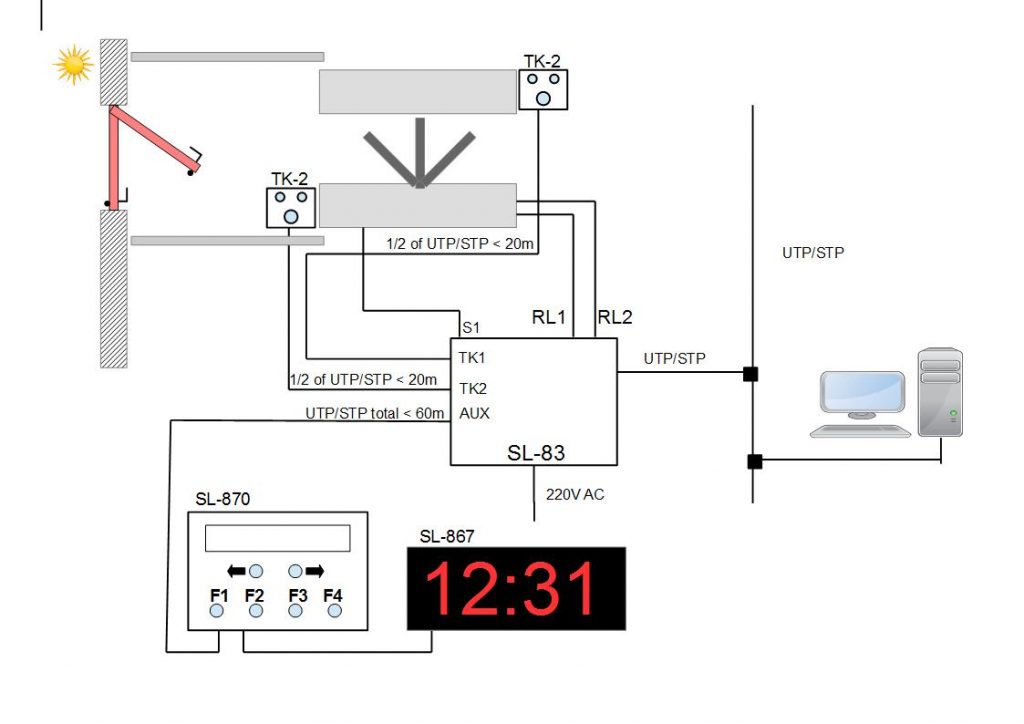Time and attendance with access control using a turnstile usually has the following features:
- The turnstile can be single or bi-directional. The example assumes a bidirectional turnstile
- The IN reader generates an IN clocking for T&A and signals the turnstile through relay output RL1 to enable rotation in the IN direction
- The OUT reader generates an OUT clocking for T&A and signals the turnstile through relay output RL2, to enable rotation int OUT direction
- The S1 sensor input is connected to a micro- or reed-switch in the turnstile, which indicates that the turnstile arms have been rotated enough (in either direction) to allow the relay signals to be turned off and still allow the turning of the arms a full 120 degrees. This sensor input is used to turn off the RL1 and RL2 relay outputs ASAP to prevent the arms from turning more than 120 degrees and allowing more than one person to pass with one clocking.
- There are no more free relay outputs so if the jingle system or the random search function is needed, the SL-84, with four relay outputs needs to be used.
- If a single-direction turnstile is used, (the arms rotate freely in the exit direction) the RL2 relay output is not needed and can ve used for jingles or searches
- The optional use of the AUX port is shown for the SL-870 terminal (in case other activities such as official exit, field work, lunch break etc are needed) and the large LED clock display.
- iButton readers are shown, but the concept is the same with RF readers
- We can control two bidirectional turnstiles or four sinlge-direction ones with a four-channel SL-84

